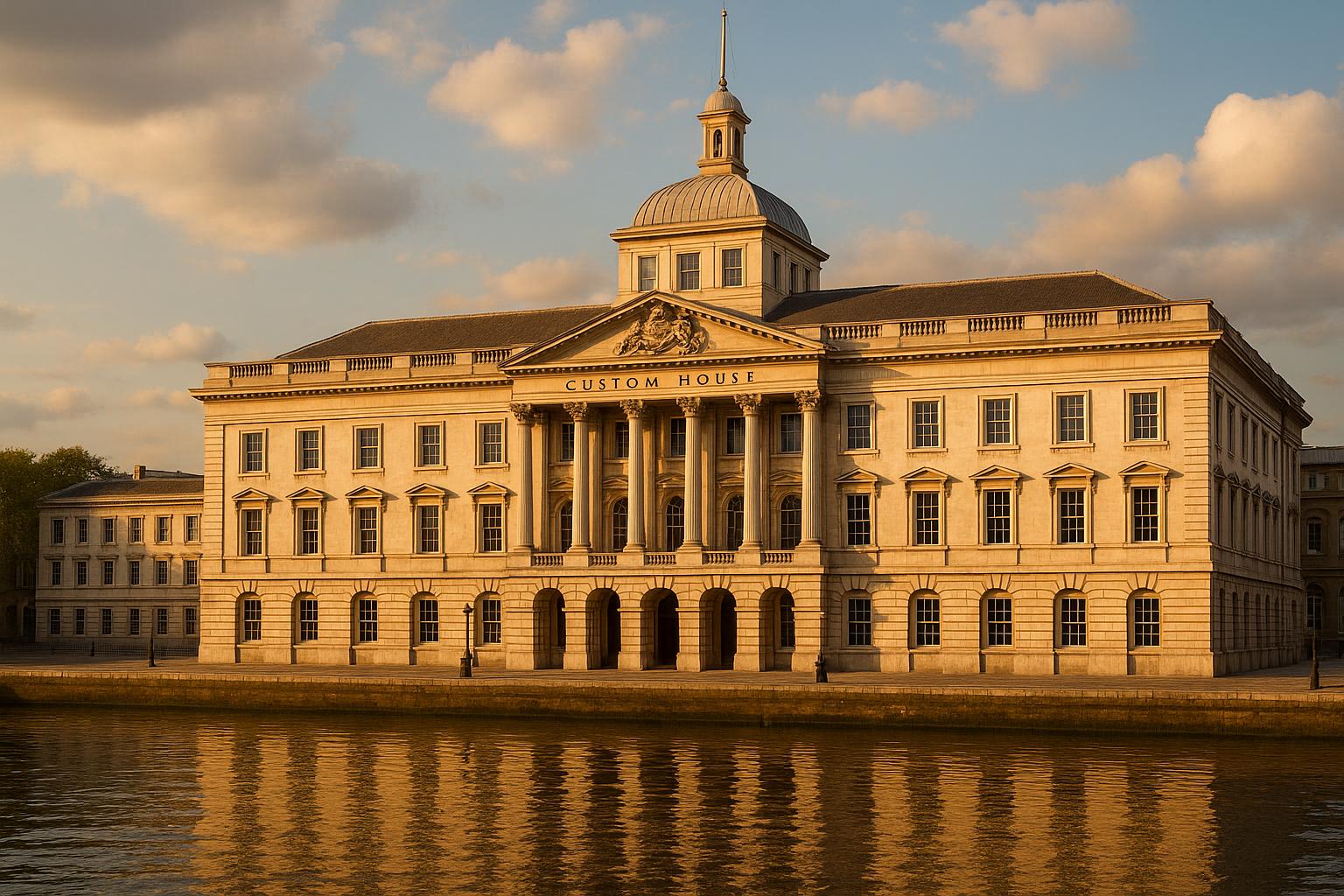Jastar Capital has secured planning approval for the sensitive refurbishment and redevelopment of Custom House, a Grade I listed building on Lower Thames Street in the City of London. This project aims to transform the historic riverside landmark, which was vacated by HMRC in 2021, into a prestigious 179-bedroom hotel complemented by extensive restaurants, bars, and public spaces. The approval by the City of London’s Planning Applications Sub-Committee marks a significant milestone for the building’s future, with work expected to commence in 2026.
Custom House’s transformation into a hotel is led by Orms Architects and Designers, alongside conservation specialist Richard Griffiths Architects. The redevelopment focuses on preserving the building’s rich Regency architectural heritage while introducing contemporary amenities tailored to enhance its prime riverside location. Key features of the scheme include a spa with a 25-metre swimming pool, sauna, and steam room housed in the vaulted basement, alongside diverse dining venues located within the historic King’s Warehouse. The long-derelict Long Room will be refurbished to create one of London’s largest and most prestigious event spaces, complete with views across the Thames.
The redevelopment also emphasises public accessibility and cultural engagement. Plans include the creation of a new public quayside featuring 160 metres of river frontage, improved landscaping, and an inclusive cultural programme. This will incorporate heritage displays, a curated library, guided historical tours, and a community engagement space designed to open Custom House’s grandeur to a broad audience. According to Jay Matharu of Jastar Capital, the project aspires to re-energise this stretch of the Thames riverfront and make the historic building an accessible cultural destination for Londoners and visitors alike.
Historic England has expressed strong support for the project, highlighting Custom House as a “sleeping giant” with untapped potential. Tom Foxall, Regional Director at Historic England, noted the collaboration between parties to develop plans that both respect the building’s Grade I status and introduce public river access, which has long been encouraged. This balance between preservation and revitalisation is central to the project's ethos, ensuring the long-term safeguarding of the custom house’s architectural and historical significance.
Over the past two years, the design proposals have undergone extensive consultation with a wide range of stakeholders, including heritage bodies such as The Georgian Group, SAVE, LAMAS, and the City of London Archaeological Group, as well as former customs officers and community representatives. Furthermore, environmental goals have been integrated into the development, aiming for a BREEAM Excellent standard through the removal of harmful modern interventions and the establishment of a car-free site.
Jastar Capital’s vision for Custom House aligns with broader trends in adaptive reuse of London’s historic buildings, blending cultural heritage with modern hospitality and public amenity. This redevelopment is expected to contribute significantly to the evolving Thames riverside landscape, offering a rare and evocative blend of historical grandeur and contemporary urban vitality.
📌 Reference Map:
- Paragraph 1 – [1], [7], [2]
- Paragraph 2 – [1], [4], [5]
- Paragraph 3 – [1], [2], [6]
- Paragraph 4 – [1], [4], [6]
- Paragraph 5 – [1], [4]
- Paragraph 6 – [1], [4], [5]
- Paragraph 7 – [1], [3], [6]
Source: Noah Wire Services
